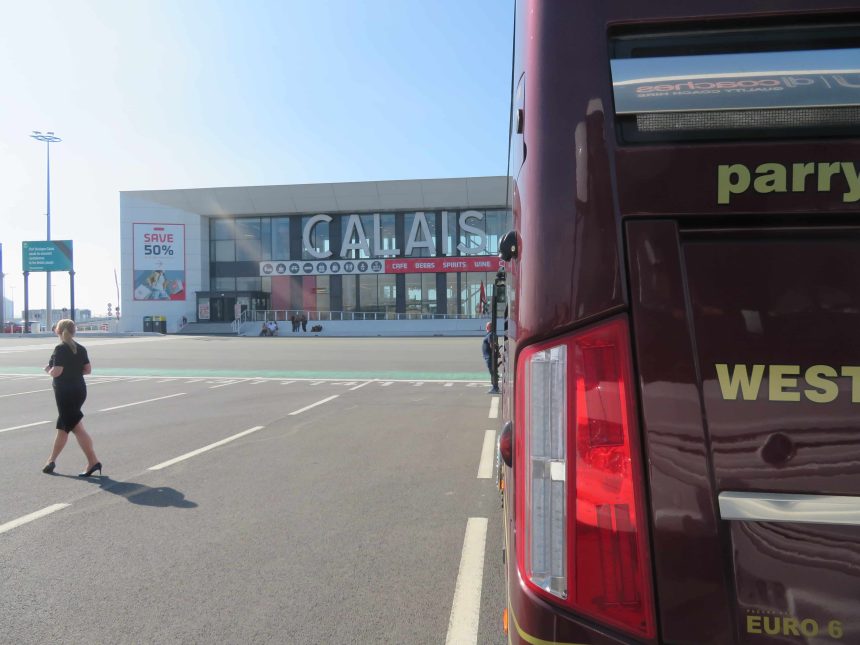Delay to the introduction of the Schengen area Entry/Exit system (EES), which was scheduled to come into force on 10 November, likely did not come as a surprise to even the least sceptical coach sector onlookers.
But there has been no shortage of concern voiced in response to the setback: Trade bodies the UK Coach Operators Association (UKCOA), RHA, the Confederation of Passenger Transport and the Coach Tourism Association have all made clear a desire to see clarity and communication from all parties involved to ensure eventual implementation mitigates what they have warned could be a ‘catastrophic’ effect on European coach travel.
On the front line and preparing for that day has been the Port of Dover. Ironically, for authorities there, the delay did, in fact, come as a surprise — perhaps even a disappointment. Much preparation has been undertaken and millions invested. Dover is one of three sites in the UK where EES will eventually be implemented, the others being St Pancras International and Eurotunnel. routeone speaks with the Port’s comms team to find out what the delay means at the border.

Outside influence on Port of Dover
Structurally, the Port says it had done everything it could do to ensure it was ready to cope with coach and car processing following implementation of EES on 10 November — but this is not a UK-led scheme, and authorities have revealed to routeone a chaotic journey to implementation, with much of the promised technology still nowhere to be seen at time of writing, and poor integration between the EU back-office and individual member state systems.
“From a structural point of view, we were doing everything within our remit,” reveals a spokesperson for the Port, stating that coaches were ready to be accommodated within a new building at its Western Docks, and canopy and booths for agents completed at the Eastern Docks. “We were ready to hand the keys over. The big concern was that no-one had seen any of the technology that we had been due to take delivery of.”
The Port had been promised kiosks and tablets by a company contracted by the French Ministère de L’Intérieur, but as of time of writing, even the tablets are yet to be received. “We had none even for testing,” the spokesperson adds. “That was our biggest concern — without those, the system was never going to go live.”
Trial tablets had been supplied in February for taking biometrics and swiping passports, but over two days of testing on live passengers, they had suffered an 80% failure rate, according to Therese West-Moore, Head of Port Operations (pictured).
“We were nervous,” she says, having been told by French authorities that the technology subsequently required redevelopment. “Some of my colleagues went to Paris to see the new technology. That tested OK in a laboratory environment. But we haven’t had any to test ourselves. We would need three to six months of testing before we even got to live environment implementation and training.
“What also became apparent was the fact the French front-end systems don’t talk to the European EES technology in the background.”
For those wondering what that means, French technology at Dover would create initial files from biometric data. That file is then theoretically sent to an EES database, which returns the file to the French system. However, those technology platforms don’t communicate. “This isn’t just in France,” Therese adds. “This seems to be a general problem.”
Local authorities relieved
Not all parties agree that the 10 November go-live date would have been a success. Local politicians in particular seemed relieved.
On 10 October the Kent County Council (KCC) news and features website published a statement from council leader Roger Gough noting that he was “pleased that… the EU will not be introducing EES checks on 10 November,” stating that introduction at that date would have “resulted in periods of very significant disruption at the Port of Dover.”
Shortly after, on 15 October, Cllr Gough appeared as a witness at a Justice and Home Affairs Committee discussing the electronic border management systems alongside Cllr Kevin Mills, leader of Dover District Council (DDC), who also welcomed the delay. Cllr Mills revealed that DDC was “extremely pleased” with the delay, saying introduction would have been “utter carnage”.
He states: “[Dover Harbour Board] has yet to backfill the western docks for the coaches, although that is happening.” (The Port notes here that the backfill of the Western Docks was never intended for coaches, and was for the expansion of commercial land). “None of the infrastructure and new technology is currently ready; I do not believe that the roads are currently ready. The Department for Transport (DfT) has made great play of the fact that it is looking to establish car parks, lorry parks — call them what you will — to take traffic off the road. As of today, it has not discussed that, or conversed with DDC in any way, shape or form, although it must be looking in our district. We heard a couple of months back that that was what it intended to do, and we have heard absolutely nothing since.”
Cllr Gough meanwhile goes on to suggest that both local authorities had been prepared but that a “question” remains over structural issues and technology at Dover. Cllr Mills suggests that EES would be tantamount to “gridlock on steroids… In Dover, it is not just the A20; the whole town stops. Nothing moves. I am not exaggerating.”
The Port responds by saying: “The issues that we face at every key getaway are non-compliant tourist traffic. We work hard with the media, with KCC and Kent Highways on ensuring that all traffic remains compliant when we are at a key getaway. In the past it has worked well. There is work to do regarding the infrastructure on the roads, but from Dover’s perspective, we are ready, minus the technology. Our port team have been working 24/7.
“We were given notification of the Justice Committee hearing and there will be a follow-up visit to the Port to give [the Committee] a full understanding. There will be further understanding of what the crunch points are and what each area needs to be responsible for.”
Therese further clarifies that the new kiosks have been tested, and the Port is confident in their introduction. But the ideal situation would still be a remote digital one — an app — where passengers can register before reaching the Port. “We still haven’t had any updates on such an app, and I don’t think it’s top of the to-do list,” she adds.

What next for Dover?
With Dover structurally ready, the main question now is when the go-live date will be announced, and whether its introduction will take account of the desire both by authorities and operators to avoid peak periods.
“For us, it’s in one way disappointing that EES didn’t go live when it was scheduled to,” Therese notes, hinting at the colossal effort that has gone into ensuring the Port has been, structurally at least, ready for EES. Those efforts represent an investment in the region of £17 million for the first phase. They had also been acknowledged by Peter Bradley, Managing Director of UKCOA, who in September reported positively to routeone following meetings with the Port and with Parliamentary Under-Secretary of State for Future of Roads Lilian Greenwood that all parties involved in EES had been working tirelessly for a smooth transition.
“We’ve been full steam ahead working towards the 10 November deadline, and now that we haven’t got a firm date, we still have to carry on with our plans to make sure we can implement EES,” Therese adds. “Because the EU has been so adamant that the implementation date was 10 November, it was a surprise to us when it delayed it. We were expecting a phased implementation, but what that looked like, we didn’t know. Of course, it would have been a phased approach because we still didn’t have the technology — but we were still surprised because of the confidence leading up to it.”
There had been warning signs. A Port comms executive had been on regular calls with DfT, which had been promising a communication toolkit and had reiterated that the general public required several months to receive messaging around the introduction of EES and what effect it would have on travel and processing.
“We were a month away from go-live date, and we still had not received anything like that,” Therese says. “That’s when we started to get concerned. We didn’t get any additional heads up from the Home Office, from DfT, or from the EU directly, apart from the day it was finally announced.”
It is now ‘business as usual’ for the Port, until further notice. There is currently reduced capacity while infrastructure work is completed. A spokesperson states the building, once installed, will not reduce the capacity.
The Port has also worked hard with the Kent and Medway Resilience Forum on external network plans and ensuring traffic officers are present during busy periods.
Guidance is now awaited on what the phased approach announced alongside the delay will look like. Dover is keen for a sufficient testing period, allowing a certain percentage of traffic to be processed to build confidence in the technology. A date of 18 November was given for the arrival of the processing kiosks, but that technology will not be used until a go-live date is confirmed. There is still no idea of when that might be. When drawn upon that, Therese can only confirm that an announcement of a go-live date is not expected before Christmas.
In the meantime, she wants to reassure coach operators that Port of Dover has their chief concern in mind: It does not want an implementation date to hit any peak periods.
“Any time between Easter and the end of summer is not a good go-live date for us, and especially not for coach traffic,” she says. “We are pushing that we do not want implementation around that period. This is why we keep saying 10 November would have been perfect.”
That sentiment seems to also be coming from the EU member states. “We are all aligned on this,” Therese adds. “We have to be considerate that this is implemented at the right time.”
Largely, the processing of coaches gives Dover the most confidence of any traffic it deals with. “We’ve made great headway, and we are happy to convey the process with our coach partners,” a spokesperson concludes. “We have been inviting our coach partners on site for presentations. We’re confident that coach processing is in the best position it can be.”





























